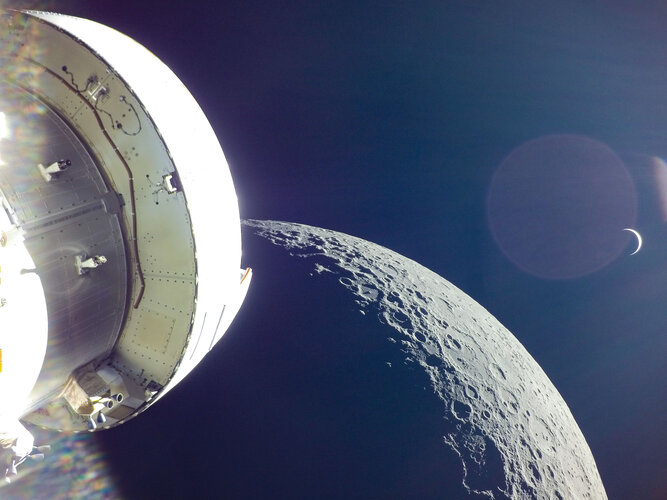NASA’s Orion spacecraft, powered by ESA’s European Service Module, shares a stunning new take on ‘Earth rise’ following the return powered flyby of the Moon.
This image was taken on 5 December, flight day 20, after the spacecraft completed a 3 minute 27 second burn to swing around the Moon and back to Earth.
Just before the burn, Orion made its second and final close approach to the Moon at 17:43 CET (16:43 GMT), passing 130 km above the lunar surface.
The burn, which used the European Service Module’s main engine, changed the velocity of the spacecraft by about 1054 km/h. It was the final major engine burn of the Artemis I mission.
Orion is due to splashdown in the Pacific Ocean on 11 December to complete the 25-day Artemis I mission.
“Orion is heading home!” said NASA administrator Bill Nelson. “The lunar flyby enabled the spacecraft to harness the Moon’s gravity and slingshot it back toward Earth for splashdown. Next up, reentry!”
Sadly, but necessarily, the European Service Module’s contribution to Artemis ends 40 minutes before splashdown. Together with the Crew Module Adapter these elements of the Orion spacecraft will detach from the Crew Module and burn up harmlessly in the atmosphere, leaving Orion on its own for the last crucial minutes to splashdown.
Find Artemis I mission updates and flight day logs on ESA’s Orion blog.



 Image:
Image: